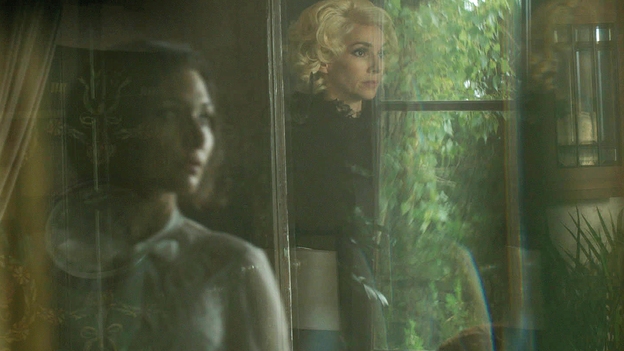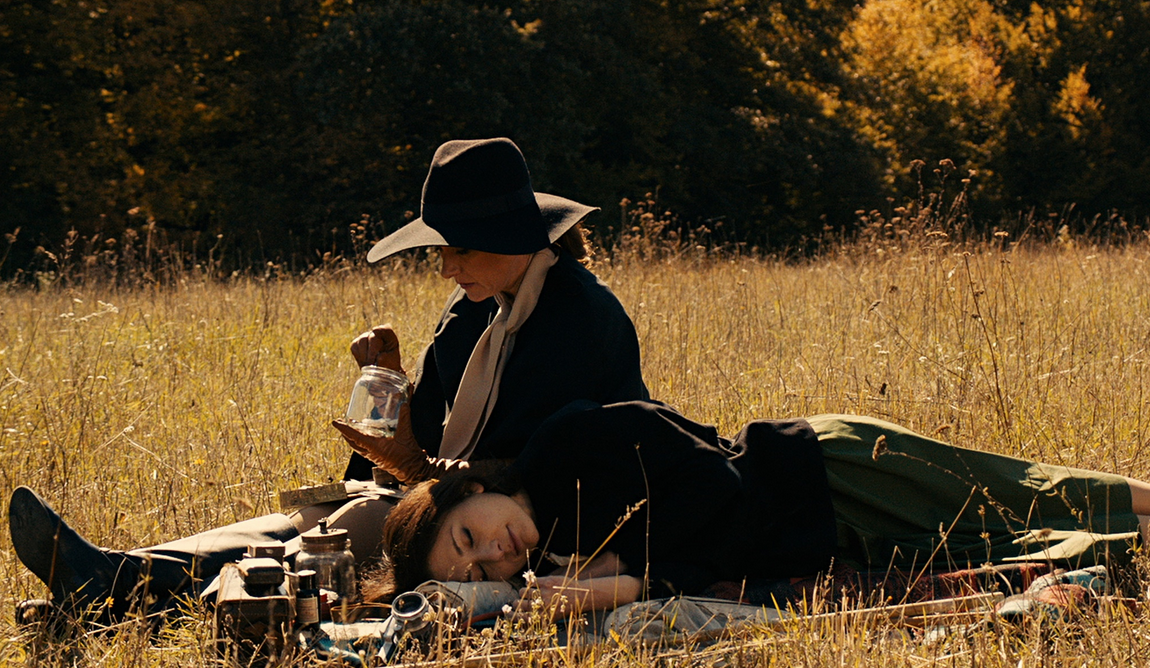Super and Magnificent.
Such is the power of the imagery in Peter Strickland’s wonderful film The Duke Of Burgundy that a repeated visual motif of popping bubbles can mean so much and then so much more and then more again. Superficially, the film is Strickland’s homage to the era of European erotic cinema that emerged from the late 60s through to the early 70s, which heralded somewhat of a sexual awakening for the world of cinema. It was an evocative era for film, with works like Buñuel’s Belle de Jour or Roeg and Cammell’s Performance probing carnal impulse with a curiosity that’s been somewhat lost in the subsequent decades.
Strickland’s film is teaming with visual reference but there’s far more to The Duke Of Burgundy than adulation. It invites excessive scrutiny. There is flagrant suggestive imagery, such as in Strickland’s visual bombardment of moths and butterflies. The meaning is perhaps too clear, but it might not be. If there is nothing to it then Strickland certainly affects significance in almost every detail. The title of the film refers to a specific species of butterfly rather than any details of Strickland’s narrative. Not only is it a curiously perfect fit for the film, aesthetically speaking, but a cursory search regarding that particular species highlights some remarkable correlations between it and the substance of Cynthea and Evelyn’s story.
“Such ugly creatures, crickets,” one of the characters remarks, “No wonder they hide under the ground.” Crickets and their nature are significant in The Duke Of Burgundy. So are butterflies, which undergo somewhat of an awakening during their extraordinary metamorphosis. So are moths, which are concurrently attracted to and disoriented by light. Suggestive imagery with purpose can be a powerful tool for a filmmaker. Often more impressive is vague suggestion of significance. We prefer to make up our own mind rather than be told what to conclude.
A young girl, Evelyn, arrives at the lush estate of an icy academic, Cynthea, to begin work as a cleaner. The latter instructs the former with detached dominance. But there’s more to it than that. The film follows a lesbian sadomasochistic partnership, although it’s never particularly erotic. It’s too private to be erotic. What if you were privy to everyone’s sexual whims? What if they were privy to yours? The more we uncover about Evelyn (Chiara D’Anna) and Cynthia’s (Sidse Babett Knudsen) relationship, the more matter of fact and unsensational Strickland presents the erotic appetites of his characters. It’s not designed to titillate. It’s just too personal.
Sadomasochism is a relatively inconsequential, especially for a film that ostensibly revolves around the practice of sadomasochism. Sex is more important, or perhaps sexuality. Love is even more important. Strickland lures the audience in with a false sense of eroticism before stripping back the sensuality to reveal an unexpected reservoir of feeling. There’s a extraordinarily universal quality to Evelyn and Cynthia’s relationship, despite the obvious specificities.
The world that Evelyn and Cynthia inhabit is fantasy and the locations as spatially coherent as a dream. There is the house, in which most of the events transpire and there is a vaguely delineated institute in which Cynthia lectures to a hall full of women regarding lepidoptera. There are no men in The Duke Of Burgundy, which is apparent but never laboured. It’s a welcome thing in a medium that is so conscious of highlighting gender empowerment to a fault.
The Duke Of Burgundy is one of those rare films in which imagery, sound, direction, performance and content consolidate so harmoniously that it seems effortless. You wonder why all films don’t come together so naturally. There’s too much to absorb in one viewing. It’s absolutely intoxicating.
9/10
For more Reviews, click here. If you’re digging ReelGood, sign up to our mailing list for exclusive content, early reviews and chances to win big!

